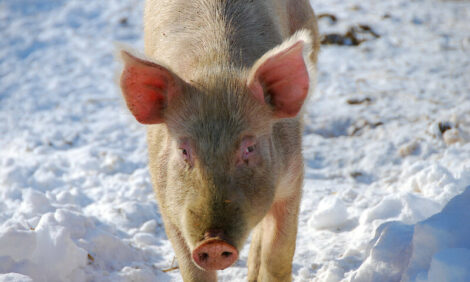



El Niño Continues to Impact 2016 Weather Patterns
ANALYSIS - A two-year El Niño event has bad a strong influence on world weather, according to Art Douglas, PhD, Professor Emeritus at Creighton University, who recently presented the annual weather forecast at the National Cattlemen's Beef Association (NCBA) meeting, where he projected moisture conditions in the US to continue through the summer.Last summer, drought in India, Mexico and the Caribbean were attributed to El Niño and in the past two months, drought in Brazil has been tied to this strong event.
Data from the tropical Pacific and NOAA models all suggest that 2014-2016 has now entered its decline phase, but ocean temperatures should remain at El Niño levels through at least late spring 2016.
“El Nino conditions have again built across the Pacific and this will fuel a split jet stream pattern into the Southwestern United States. Moisture will gradually increase in February from southern California to the southern High Plains,” said Dr Douglas.
“Snow-packs in the northern Rockies are expected to remain well below normal at 50-70 percent levels while the southern Rockies should gradually build their snowpack through March. As the jet heads east it will pick up Gulf moisture and lead to above normal rainfall throughout the southeast.”
“The pesky ridge in the West will gradually weaken during February and by the spring this will allow moisture to increase in the Pacific Northwest,” he explained. "A strong Great Lakes trough is forecast to keep a broad portion of the United States colder than normal through the spring and early summer.”
 Dr Douglas said by March and April, the southern jet stream will move north and this will favour wetter-than-normal weather in the central and eastern Corn Belt.
Dr Douglas said by March and April, the southern jet stream will move north and this will favour wetter-than-normal weather in the central and eastern Corn Belt.
This wetter trend will be accompanied by slower spring warming and delayed field work and planting are likely especially in eastern sections of the Corn Belt with possible threat of late frosts into the late spring.
“The cool temperatures are likely to persist into early summer and this will slow crop progress but be ideal for corn pollination in July. The silver lining in the forecast is that the Midwest should turn warmer by August and September and this will help speed up crop maturation,” he said.
At the end of the previous mega El Niño events (1983 and 1998), evolving ocean temperatures in the Pacific favoured the sudden development of mid-continental drought in the central US in mid and late summer. Current forecast models suggest this may not be the case for this mega event as water temperatures are not forecast to show delayed cooling until late summer 2016.
While the first year of El Niño did not bring relief to the four-year drought in the West, this second year of El Niño has become much wetter. With a weaker El Niño in 2014, ocean temperatures favoured weaker storminess well off the West Coast.
The tightened temperature gradients this year have favoured an active storm tract aimed at the West Coast with a split jet tracking Southwest into the central and southern Plains and the Southeast. This split jet stream pattern will favour continued above-normal precipitation from California to the Southern Plains and the Southwest through March.
Winter wheat areas of the Plains will benefit from above-normal precipitation and reduced risk of winter kill. With the frequent storms, temperatures in the southern states will be slightly cooler than normal mainly due to the wetter weather limiting daytime heating.
The analogue forecast system suggests late February and March are likely to become quite stormy in the US feed yard region of the Plains with periods of heavy rain and snow likely to create problems for cattle on feed.
With El Niño favouring a strong split jet pattern across the country, the northern states will tend to be milder and somewhat drier than normal through early spring. The northern branch of the jet in Canada will tend to prop-up arctic cold from coming south. With the split jet, northern storms will move into Alaska and northern Canada, and this will leave the northern Rockies with diminished snow packs.









